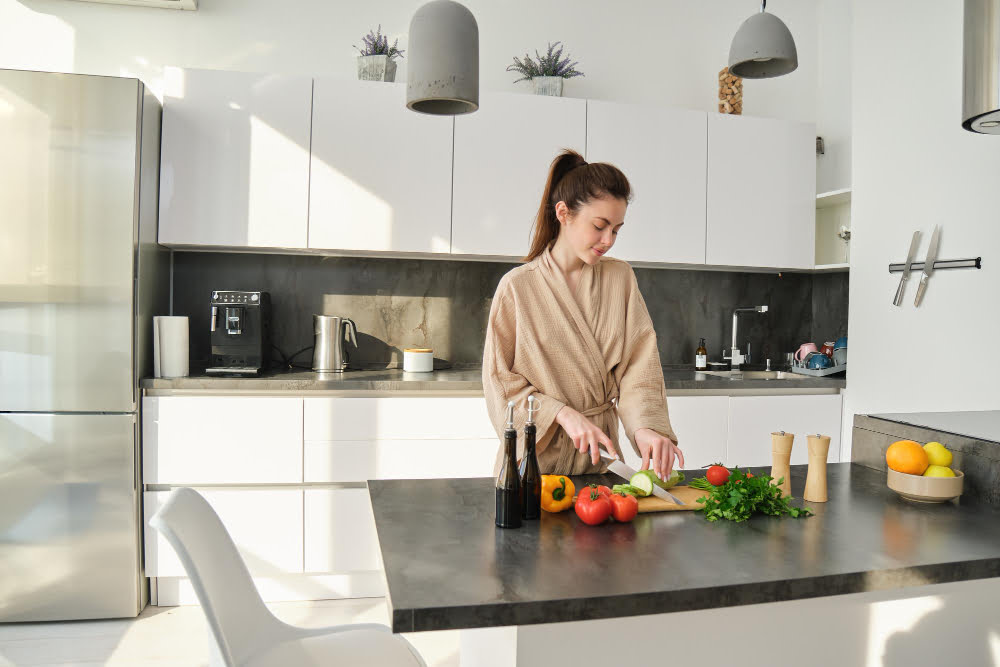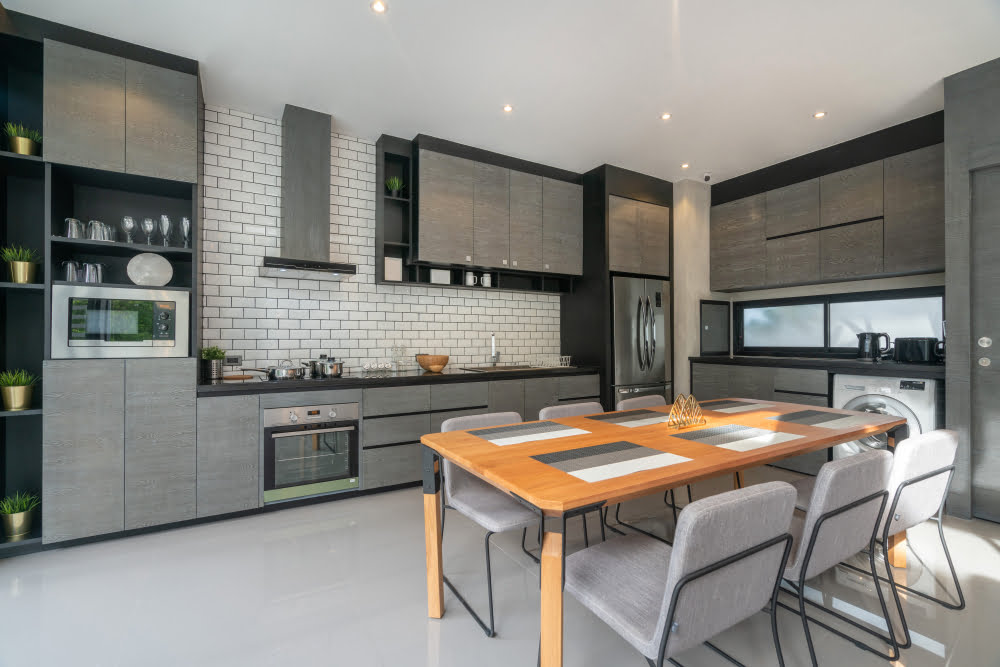Last updated on
The kitchen, often referred to as the heart of the home, is a space that melds form and function. A well-designed kitchen not only adds value to your home but also makes meal preparation a joy. The design of a kitchen is an art that requires careful consideration of several factors.
According to a report by the National Kitchen and Bath Association, in 2020, Americans spent approximately $158 billion on kitchen remodels and improvements, emphasizing the importance homeowners place on having a well-designed, functional kitchen.
This guide aims to explore six kitchen design essentials that will help you craft a kitchen you’ll love. From practical considerations to aesthetics and ergonomics, these tips will ensure that your kitchen is not just a workspace but a welcoming hub for family and guests.
Efficient Layout

The classic ‘work triangle’ – the optimal distance between the sink, refrigerator, and stove – should be kept in mind. The goal is to minimize steps while cooking and cleaning, saving time and energy. If you want, you can always rely on a professional to help and guide you through the process. Whether your choice resides with a Calgary Kitchen Renovations contractor or any other contractors, make sure to choose wisely.
Of course, the layout of your kitchen should depend on the available space and your personal preferences. You may opt for a galley layout, an L-shaped configuration, or an island kitchen. Whichever design you choose, make sure that it allows for easy navigation in and around the kitchen.
Quality Materials
Consider materials that are easy to clean and maintain for countertops, cabinetry, and floors. Quartz and granite countertops are popular options due to their durability and aesthetic appeal. For flooring, consider materials like ceramic tile, hardwood, or vinyl as they are easy to clean and can withstand heavy traffic.
These materials may be slightly more expensive than other options, but in the long run, they will save you time and money. For cabinetry, consider materials like solid wood or plywood for a long-lasting, sturdy option. In fact, cabinets can often last for decades, so investing in quality materials is a wise choice.
Ample Storage

Incorporate plenty of storage options into your design with strategically placed cabinets, pull-out drawers, and pantry organizers. This will not only keep your kitchen organized and clutter-free but also make it easier to find things when you need them. Consider vertical storage options to maximize space, such as cabinets that extend to the ceiling or open shelving.
If you have an island in your kitchen, use the space for additional storage, whether in the form of drawers or shelves. Most importantly, make sure that the storage options are easily accessible and tailored to your specific needs. Even small kitchens can have ample storage with the help of clever design and organization.
Good Lighting
Not only does it make the space welcoming, but it also improves safety while preparing meals. Incorporate different types of lighting throughout your kitchen, such as overhead lights, under-cabinet lights, and task lighting. This will ensure that there is adequate light in all areas of the kitchen, whether you are prepping food or entertaining guests.
You can also use lighting to highlight specific areas or features in your kitchen design, adding a touch of ambiance and style. For example, consider installing pendant lights above an island or a chandelier over the dining area for added visual interest. Furthermore, opt for energy-efficient LED bulbs to save on electricity costs in the long run.
Appliance Selection
Select appliances based on your cooking needs, kitchen size, and energy efficiency. Consider the amount of counter space you have available when choosing appliances, as well as their size and placement. If you have a smaller kitchen, opt for compact appliances that can save space without sacrificing functionality. Additionally, choose energy-efficient options to save on utility costs in the long run.
When selecting appliances, think about how they will fit into your overall design aesthetic and consider purchasing matching appliances for a cohesive look. For instance, stainless steel appliances can add a modern touch to the kitchen, while white or black appliances may blend in seamlessly with traditional designs.
Personal Touch
Whether it’s a unique color scheme, a backsplash that pops, or a vintage stove, these details can make the kitchen truly yours. Consider incorporating personal touches that reflect your style and personality into the design. This could be in the form of artwork, decorative items, or even family photos displayed on open shelving.
Don’t be afraid to take risks and add unexpected elements to your kitchen design – after all, it’s a space that should feel like home. Furthermore, consider adding greenery or fresh flowers to the kitchen for a touch of nature and color. These personal touches will not only make your kitchen unique but also create a warm and inviting atmosphere.
The Takeaway
Designing a kitchen you’ll love is a process that requires careful planning and consideration. By incorporating these six kitchen design essentials, you can create a space that is both functional and aesthetically pleasing. Keep in mind your personal preferences, as well as practical considerations like layout, materials, storage, lighting, appliances, and adding a personal touch.
With the right combination of these elements, you can transform your kitchen into a place that not only inspires creativity but also brings people together. So, go ahead and create your dream kitchen – one that you’ll love for years to come.
Recap:



